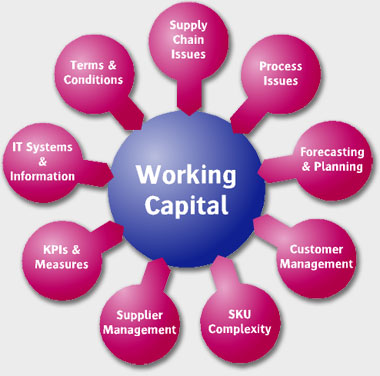How to Analyse Working Capital Management
Instructions
-
1
Look at the bigger picture and not just a particular unit. That will be crucial as most companies will have some divisions making instant money which can be utilized elsewhere to meet temporary or unanticipated shortfall. For that to happen, a company must link the production and sales aspect into one.
-
2
The most crucial element is to be able to track down your inventory movement. This will consist of raw materials used for making that product, the work in progress and the ultimate product itself. The working capital deficit may not be a bad thing for companies which can easily convert their assets into cash, but for most, it is important to maintain the right amount of inventory. This will essentially include decisions regarding the levels of inventory which are needed to be kept, or dealing with products on a demand basis.
Apart from that, a company must ensure that the production elements align with the sale aspect of the business where proper records are maintained and little to no waste is produced. -
3
Every element must be analysed from a long term prospective. Since many will face seasonal demands, it is important to plan ahead and make contingency plans to account for unexpected situations, such as low accounts receivable turnover. One can also choose to keep funds in reserve to cover those unforeseen expenses.
-
4
Closely analysing Working capital related ratios provide companies with the best chance of knowing how rapidly the inventory changes hands. These include Working capital ratio, Accounts Receivable turnover, Day’s receivable and Inventory Turnover. It will tell the company the time it takes for the inventory to leave the company's premises, delivered in the market, sold and the proceeds earned from the sales.
-
5
Ideally, working capital is inter-related with a product's life cycle. If the company is satisfied with their own production process, then it must give close attention to the marketing aspect, with regards to the product cycle.
At first, the market needs to be informed about the new product, before the growth element kicks-in. At the time of decline, a company may be better off selling the rest of the inventory through special offers.



